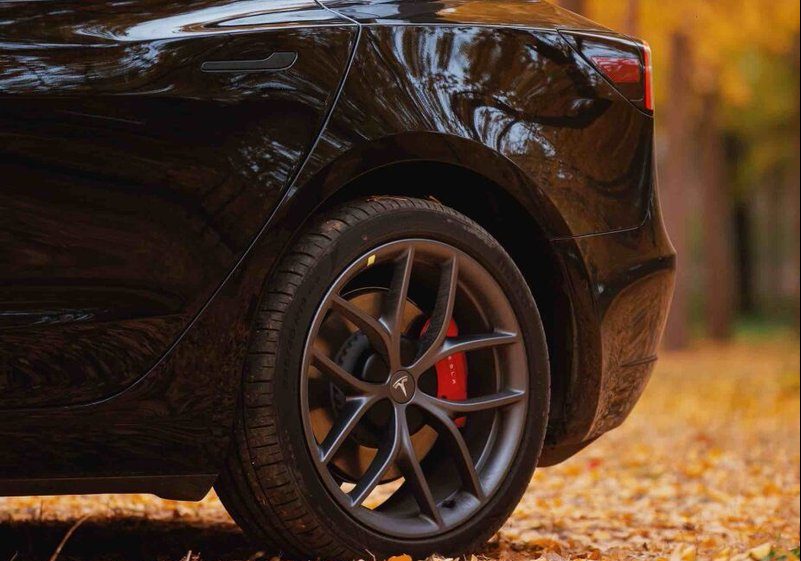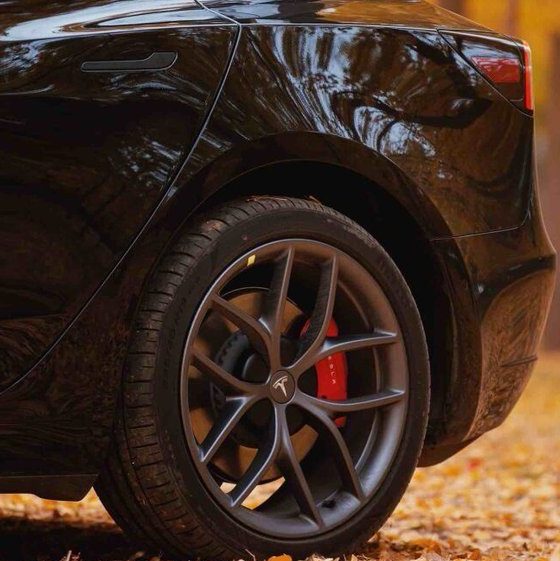

News
IF Metall excludes union members who continue to work for Tesla Sweden
Amidst the tense atmosphere in Sweden, a notable portion of Tesla employees have continued to attend work as usual and refused to strike. These include some employees who are members of trade union IF Metall, which is currently clashing with Tesla Sweden over the EV maker’s lack of a collective agreement. These workers, as per a recent report, will now be paying a price.
As noted in a report from Dagens Arbete (DA), the trade union shared a rather difficult decision on Wednesday. As per Martin Gunnarsson, IF Metall’s union secretary, the union board has decided to expel members who are refusing to strike at Tesla Sweden. The decision was the result of a process that involved the union surveying which of its members continued to work at Tesla Sweden despite the strike.
“We have taken the decision to exclude a number of members who have broken the strike, members who are employed by Tesla and who, during the period that the conflict has been going on, actively broke the strike. They have simply worked as usual despite the ongoing conflict,” Gunnarsson noted.
Considering that IF Metall’s announcement of its survey was made in mid-November, it would appear that the process of surveying the union’s members at Tesla lasted over a month. It should be noted that Gunnarsson did not disclose how many members were actually expelled, nor did he share how many jobs were involved.
“We cannot go along with that. We don’t do that based on the premise that it’s about the integrity of both those who strike and those who don’t… Since the trade unions were formed once upon a time, this has been a super important issue. You must be loyal to your organization,” Gunnarsson noted.
When asked by the publication about what the affected IF Metall members would say about the union’s decision, the official noted that members who refused to participate in the organization’s anti-Tesla Sweden efforts were simply too afraid to strike themselves.
IF Metall: Several strike breakers have now been excluded – never happened before!
There are ~130 car mechanics at Tesla Sweden!
IF metall have claimed that they have >50% members (>65)
What we know is that very few actually strike, although IF Metall always tells the Swedish… pic.twitter.com/ZYaev8Jbfl— Nicklas ???T???♻️? (@NicklasNilsso14) December 21, 2023
“It must not be underestimated that they have been faced with a demand from day one from the employer. To either choose Tesla or to choose IF Metall. If you have wanted to strike, then you have behaved in word and deed in a way that means you are not welcome back at Tesla. Many people think collective agreements are good, and something you want. But you are simply too afraid to strike yourself,” he said.
Gunnarsson also admitted that IF Metall has found it quite strange that some of its members have continued to work at Tesla despite the union’s ongoing efforts against the company. The official also noted that the union’s decision to expel some of its members was a decision that was not made lightly.
“It is no national secret that we think it is very strange and unfortunate that some people act in this way. Strike-breaking has occurred in various forms during the existence of trade unions. On the other hand, in Sweden, there has been no similar strike-breaking, where the employer has urged the employees to continue working. Forcing an exclusion case in this way has never happened before. It’s not something you do with great joy,” Gunnarsson noted.
Don’t hesitate to contact us with news tips. Just send a message to simon@teslarati.com to give us a heads up.

Elon Musk
Elon Musk and Tesla AI Director share insights after empty driver seat Robotaxi rides
The executives’ unoccupied tests hint at the rapid progress of Tesla’s unsupervised Robotaxi efforts.

Tesla CEO Elon Musk and AI Director Ashok Elluswamy celebrated Christmas Eve by sharing personal experiences with Robotaxi vehicles that had no safety monitor or occupant in the driver’s seat. Musk described the system’s “perfect driving” around Austin, while Elluswamy posted video from the back seat, calling it “an amazing experience.”
The executives’ unoccupied tests hint at the rapid progress of Tesla’s unsupervised Robotaxi efforts.
Elon and Ashok’s firsthand Robotaxi insights
Prior to Musk and the Tesla AI Director’s posts, sightings of unmanned Teslas navigating public roads were widely shared on social media. One such vehicle was spotted in Austin, Texas, which Elon Musk acknowleged by stating that “Testing is underway with no occupants in the car.”
Based on his Christmas Eve post, Musk seemed to have tested an unmanned Tesla himself. “A Tesla with no safety monitor in the car and me sitting in the passenger seat took me all around Austin on Sunday with perfect driving,” Musk wrote in his post.
Elluswamy responded with a 2-minute video showing himself in the rear of an unmanned Tesla. The video featured the vehicle’s empty front seats, as well as its smooth handling through real-world traffic. He captioned his video with the words, “It’s an amazing experience!”
Towards Unsupervised operations
During an xAI Hackathon earlier this month, Elon Musk mentioned that Tesla owed be removing Safety Monitors from its Robotaxis in Austin in just three weeks. “Unsupervised is pretty much solved at this point. So there will be Tesla Robotaxis operating in Austin with no one in them. Not even anyone in the passenger seat in about three weeks,” he said. Musk echoed similar estimates at the 2025 Annual Shareholder Meeting and the Q3 2025 earnings call.
Considering the insights that were posted Musk and Elluswamy, it does appear that Tesla is working hard towards operating its Robotaxis with no safety monitors. This is quite impressive considering that the service was launched just earlier this year.
Elon Musk
Starlink passes 9 million active customers just weeks after hitting 8 million
The milestone highlights the accelerating growth of Starlink, which has now been adding over 20,000 new users per day.

SpaceX’s Starlink satellite internet service has continued its rapid global expansion, surpassing 9 million active customers just weeks after crossing the 8 million mark.
The milestone highlights the accelerating growth of Starlink, which has now been adding over 20,000 new users per day.
9 million customers
In a post on X, SpaceX stated that Starlink now serves over 9 million active users across 155 countries, territories, and markets. The company reached 8 million customers in early November, meaning it added roughly 1 million subscribers in under seven weeks, or about 21,275 new users on average per day.
“Starlink is connecting more than 9M active customers with high-speed internet across 155 countries, territories, and many other markets,” Starlink wrote in a post on its official X account. SpaceX President Gwynne Shotwell also celebrated the milestone on X. “A huge thank you to all of our customers and congrats to the Starlink team for such an incredible product,” she wrote.
That growth rate reflects both rising demand for broadband in underserved regions and Starlink’s expanding satellite constellation, which now includes more than 9,000 low-Earth-orbit satellites designed to deliver high-speed, low-latency internet worldwide.
Starlink’s momentum
Starlink’s momentum has been building up. SpaceX reported 4.6 million Starlink customers in December 2024, followed by 7 million by August 2025, and 8 million customers in November. Independent data also suggests Starlink usage is rising sharply, with Cloudflare reporting that global web traffic from Starlink users more than doubled in 2025, as noted in an Insider report.
Starlink’s momentum is increasingly tied to SpaceX’s broader financial outlook. Elon Musk has said the satellite network is “by far” the company’s largest revenue driver, and reports suggest SpaceX may be positioning itself for an initial public offering as soon as next year, with valuations estimated as high as $1.5 trillion. Musk has also suggested in the past that Starlink could have its own IPO in the future.
News
NVIDIA Director of Robotics: Tesla FSD v14 is the first AI to pass the “Physical Turing Test”
After testing FSD v14, Fan stated that his experience with FSD felt magical at first, but it soon started to feel like a routine.

NVIDIA Director of Robotics Jim Fan has praised Tesla’s Full Self-Driving (Supervised) v14 as the first AI to pass what he described as a “Physical Turing Test.”
After testing FSD v14, Fan stated that his experience with FSD felt magical at first, but it soon started to feel like a routine. And just like smartphones today, removing it now would “actively hurt.”
Jim Fan’s hands-on FSD v14 impressions
Fan, a leading researcher in embodied AI who is currently solving Physical AI at NVIDIA and spearheading the company’s Project GR00T initiative, noted that he actually was late to the Tesla game. He was, however, one of the first to try out FSD v14.
“I was very late to own a Tesla but among the earliest to try out FSD v14. It’s perhaps the first time I experience an AI that passes the Physical Turing Test: after a long day at work, you press a button, lay back, and couldn’t tell if a neural net or a human drove you home,” Fan wrote in a post on X.
Fan added: “Despite knowing exactly how robot learning works, I still find it magical watching the steering wheel turn by itself. First it feels surreal, next it becomes routine. Then, like the smartphone, taking it away actively hurts. This is how humanity gets rewired and glued to god-like technologies.”
The Physical Turing Test
The original Turing Test was conceived by Alan Turing in 1950, and it was aimed at determining if a machine could exhibit behavior that is equivalent to or indistinguishable from a human. By focusing on text-based conversations, the original Turing Test set a high bar for natural language processing and machine learning.
This test has been passed by today’s large language models. However, the capability to converse in a humanlike manner is a completely different challenge from performing real-world problem-solving or physical interactions. Thus, Fan introduced the Physical Turing Test, which challenges AI systems to demonstrate intelligence through physical actions.
Based on Fan’s comments, Tesla has demonstrated these intelligent physical actions with FSD v14. Elon Musk agreed with the NVIDIA executive, stating in a post on X that with FSD v14, “you can sense the sentience maturing.” Musk also praised Tesla AI, calling it the best “real-world AI” today.








